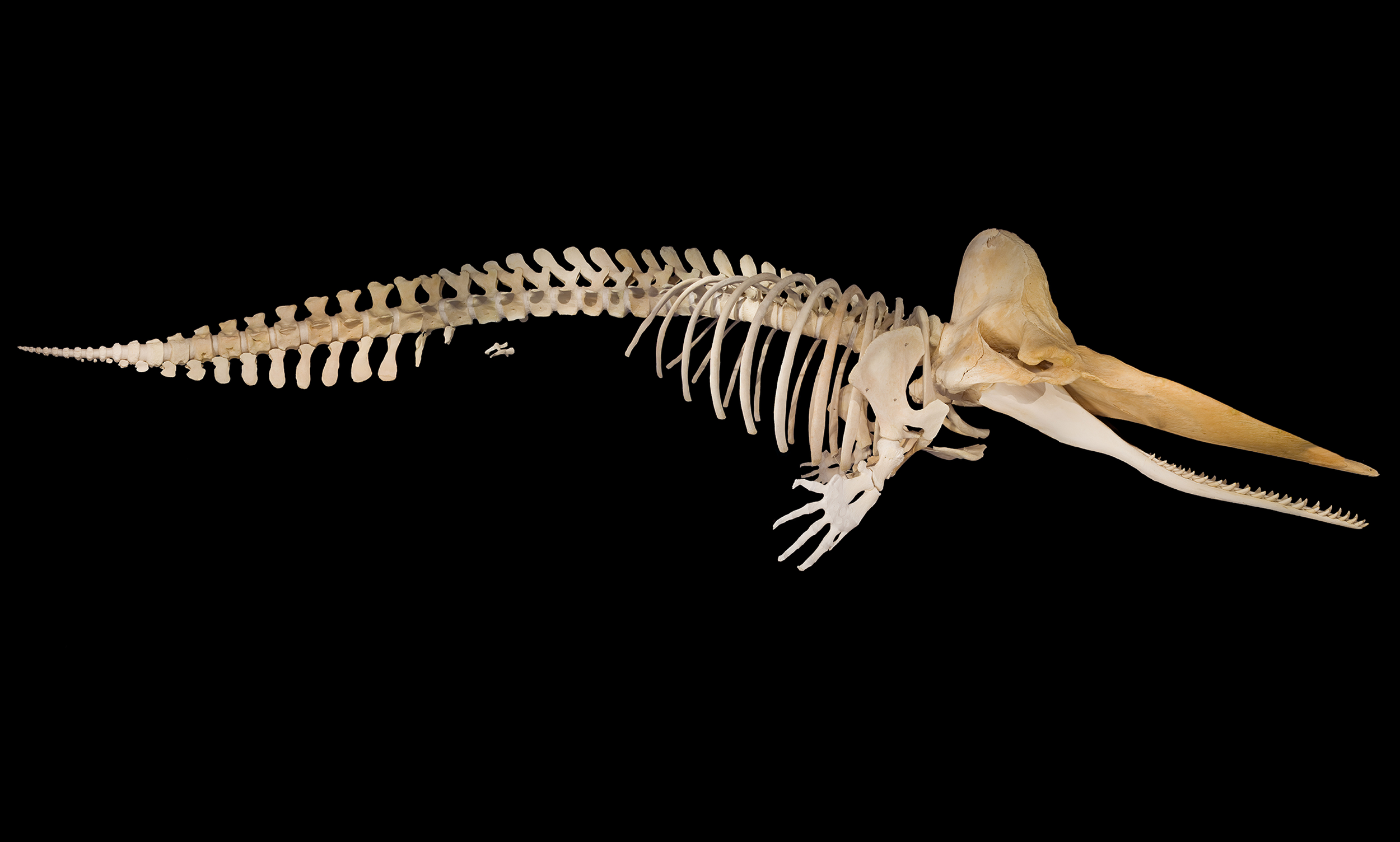
A long journey
How the sperm whale skeleton came to Göttingen - from the beach in St. Peter-Ording to the Forum Wissen. 24 years of history.
In January 1998, a tragic spectacle unfolded off the coast of St. Peter-Ording in Schleswig-Holstein, Germany. Six sperm whales, the largest toothed predators in the world, had strayed into the North Sea. For these gigantic marine mammals, whose hunting grounds are in the deep sea, shallower seas such as the Baltic and North Sea can be a potential death trap. The coast guard, together with Greenpeace, managed to guide three of the six stranded sperm whales back into the open sea. Unfortunately, it was too late for the other three males; they stranded and died. Among them was the sperm whale whose skeleton found a new home in the Forum Wissen Göttingen – a ‘Walheimat’ for learning and teaching.
We cannot say with certainty where and when exactly the journey of our whale began. The distribution range of sperm whales includes various oceans around the globe, although they are frequently encountered in certain areas. In Europe, the region around the Azores archipelago and off Madeira is particularly considered an important habitat. Here, populations of female sperm whales and their offspring can be found throughout the year, attracted by the abundant food sources and favorable sea depths. Bulls leave these areas and head north at the age of 18 to 21 years. Many of the males spend the summer months in the waters off northern Norway.
Presumably, the group our sperm whale was traveling with was heading towards Norway. They had already strayed north of Great Britain and ended up in the North Sea. Sperm whales do not find enough food here and starve. Moreover, they seem to have difficulty perceiving shallow beaches through their echolocation, their "navigation system," or do so poorly.
The reasons why whales strand are not yet understood. There are various hypotheses, and likely many of them are true. It can be attributed to natural factors such as tides, underwater formations, or disruptions in their navigation behavior. However, there are also human influences that can lead to strandings, such as noise pollution in the sea, ship collisions, overfishing, and pollution of the oceans. Sometimes it is possible to successfully rescue stranded whales and return them to deeper waters, as was the case with three out of the six whales near St. Peter-Ording. Unfortunately, in many cases, it is not possible to save the stranded whales. They perish from their injuries, dehydration, being crushed by their own body weight, or even drowning if their blowhole (nasal opening) is submerged underwater.
Even though we had hoped for a different fate for our sperm whale, the death of the animal resulted in a special situation for science: a new source of learning. The public interest in the carcasses was also immense. It's no wonder, as the young sperm whale bulls, with a length of about 17 meters and weighing around 50 tons, were an extraordinary sight on the beach. These dimensions made it impossible to remove the animals from the beach in one piece.
Therefore, a week after the stranding, a group of employees from the Zoological Museum and the Zoological Institute of the University of Göttingen traveled to the site to dissect one of the sperm whales and transport the bones to Göttingen with the help of the company Hesse. After removing approximately 35 tons of flesh and fat through strenuous work under freezing climatic conditions, the divided skeleton, consisting of 157 individual bones and 48 teeth, was transported to Berliner Straße 28. It took another three years, the expertise of zoologists, preparators, crane operators, numerous helping hands, and a significant amount of Persil, until the assembled skeleton could be admired in the former Zoological Museum. It seemed as if the whale had received a new "life" in the service of science.
Eighteen years later, the favorite of museum visitors was once again dismantled into its individual parts and temporarily stored, inaccessible to the public. The reason for this was the renovation of the former zoological building of the University of Göttingen on Berliner Straße, which was established in 1878 as the "Natural History Museum" of the university and housed the sperm whale skeleton and more than 120,000 other specimens. The building underwent extensive renovations and was reopened as the Forum Wissen in 2022. The first part, the Knowledge Museum, has been freely accessible to the public since its opening. In the coming years, the Biodiversity Museum Göttingen and the Thomas Oppermann Cultural Forum on Berliner Straße 28 will also open their doors. The Forum Wissen aims to be an interface between science and the general public and elevate science communication to a new level.
The reinstallation of the sperm whale skeleton was not without controversy due to the costs involved. However, a sperm whale impresses not only with its sheer size. These gigantic mammals have a whole series of extraordinary characteristics and are generally an impressive combination of superlatives. You can soon learn more about them in our ‘Whale biology’ section. Since March 19, 2023, our whale is once again accessible to everyone at Berliner Straße 28. After a long journey, it has returned to its ‘Walheimat’ in Göttingen, ready to amaze, teach, and inspire scientists and visitors of the Forum Wissen.





